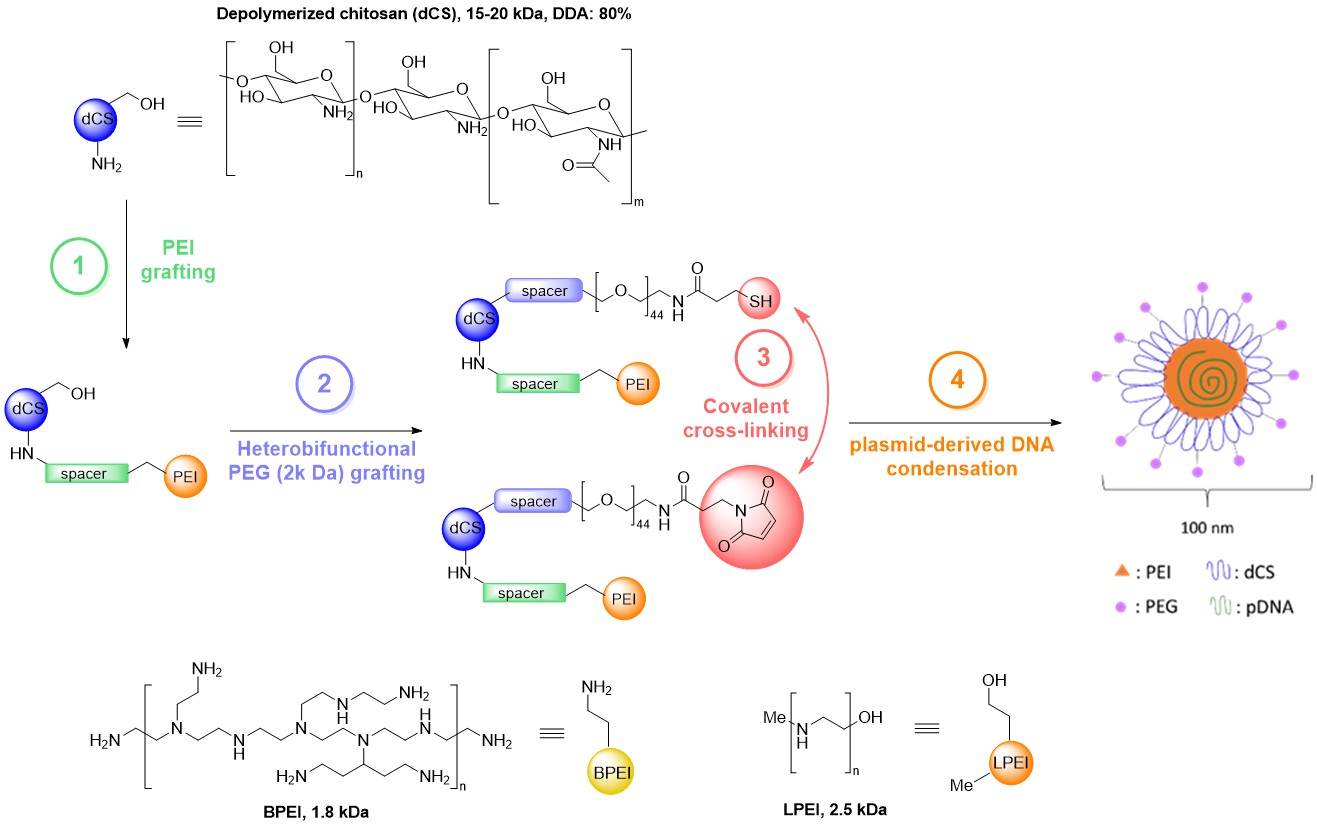Functionalization of Chitosan for Non-viral Gene Delivery to the Liver
Liver inherited monogenetic disorders like phenylketonuria (PKU) or ornithine transcarbamylase (OTC) deficiency greatly suffer from a lack of available treatments. For most patients, liver transplantation currently remains the only option, leading them to deal with life-long side effects. Gene therapy is nowadays emerging as a powerful alternative for the treatment of such disorders by making profit of viral and non-viral vectors to deliver RNA or plasmid DNA (pDNA).[1] Whereas the former offers better transfection efficiencies, non-viral vectors provide safer profiles with no or low immunogenicity and ease of production and administration to the patient.[2] Such biocompatible delivery systems are based on biodegradable polymers such as chitosan (CS) or polyethylene glycol (PEG).
We herein describe the development of a pDNA polymeric-based nanocarrier designed for liver-targeted gene therapy. This delivery system is composed of a chitosan backbone of 15-20 kDa on average, obtained by depolymerization of commercial chitosan (≈ 90 kDa). This depolymerized CS (dCS) backbone was conjugated to branched or linear polyethyleneimine (BPEI or LPEI) chains, allowing efficient condensation of pDNA through electrostatic interactions. In order to lower cytotoxicity and increase solubility and bioavailability, this copolymeric structure was grafted with heterobifunctional PEG using two different linkers. PEG was linked to the dCS backbone either via an ester or a carbamate bond, eventually leading to different pathways of degradability for the copolymer. In order to compare the efficiency of a covalent system versus a non-covalent one, we also designed dCS-PEG systems to be mixed with dCS-BPEI (or dCS-LPEI) ones. The cross-reactive PEG chains allow for further covalent conjugation of PEG-dCS-BPEI systems to enhance the stability of the copolymeric assemblies.
The chemical composition (e.g grafting degrees of PEG and PEI on dCS) and the covalency of the various synthesized systems was determined by 1H and DOSY (Diffusion Ordered SpectroscopY) NMR. In vitro assays were performed on the most relevant conjugates, in order to determine the condensation ability, transfection efficiency, physical properties and cytotoxicity of the systems. Promising candidates were compared to commercial jetPEI, a PEI aqueous formulation designed for gene delivery with high transfection efficiencies. Lastly, the first in vivo evaluation of LPEI-based system, so far the most promising combination, is disclosed.

[1] R.N. Aravalli; J.D. Belcher; C.J. Steer, Liver Transplantation, 2015, 21, 718-737.
[2] D. Ibraheem; A. Elaissari; H. Fessi, International Journal of Pharmaceutics, 2014, 459, 70-83.